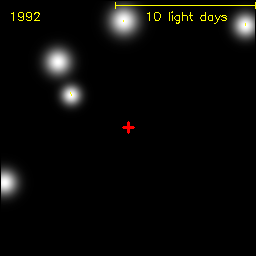- The orbit of every planet is an ellipse with the Sun at one of the two foci.
- A line joining a planet and the Sun sweeps out equal areas during equal intervals of time.
- The square of the orbital period of a planet is proportional to the cube of the semi-major axis of its orbit.
Basically, they describe the orbits of planets around the Sun (or any "small" object around a much more massive central object), under the assumption that the gravitational field can be considered Newtonian (even if historically quite the opposite happened, with Newton using Kepler's orbits to derive his laws of gravity).
The orbits of all planets in the Solar system are very well described, to first order, by these laws. Only after centuries of observations of Mercury, the closest to the Sun, it was possible to notice post-Keplerian deviations due to relativistic effects.
When Kepler's laws say "proportional", the proportionality factor involves the masses of the objects (this was found by Newton). For example, in this approximation the third law is actually
where a is the semi-major axis of the orbit (the radius if the orbit is circular), G (=6.67384 × 10-11 m3 kg-1 s-2) the gravitational constant, M the mass of the central object, and T the orbital period.
One nice example? The measurement of our Galaxy's central supermassive black hole.
Several groups have been able to measure accurately the mass of this black hole by tracking the movement of several stars around it.
In the animated GIF above, a nice illustration of the procedure. Every orbit is an ellipse having in one of its foci, marked by the red cross in the center of the picture, an "invisible" object. This object, in order to describe the orbits of all the tracked orbiting points, must have a mass of about 4 million solar masses.
Here is a quite complete description of the work done by several groups to obtain this result.
Enjoy!






